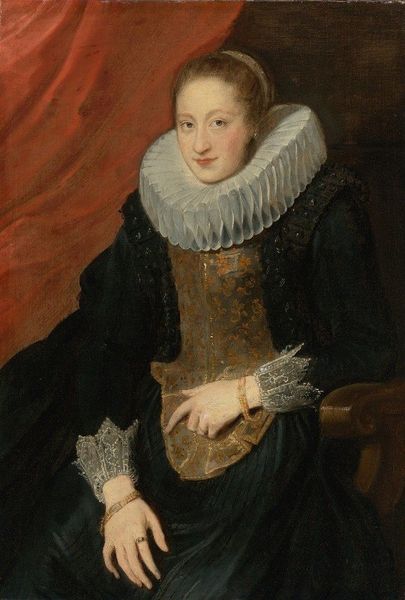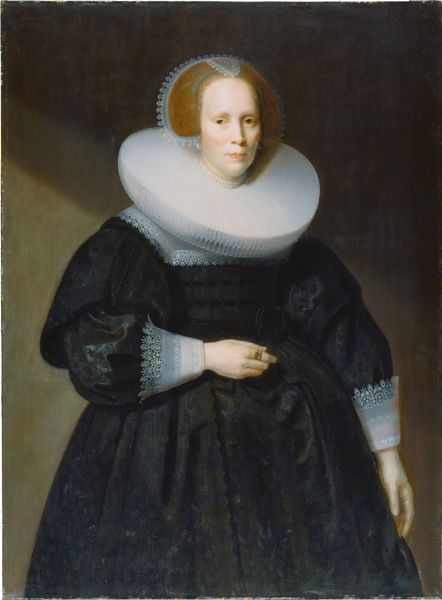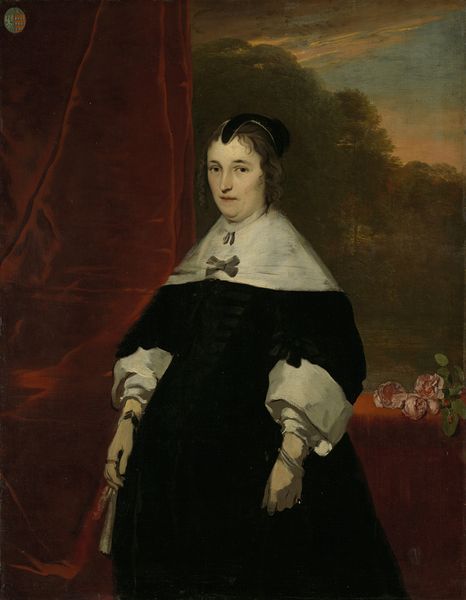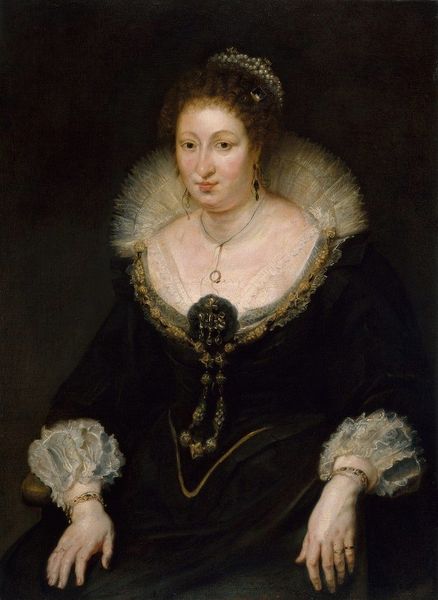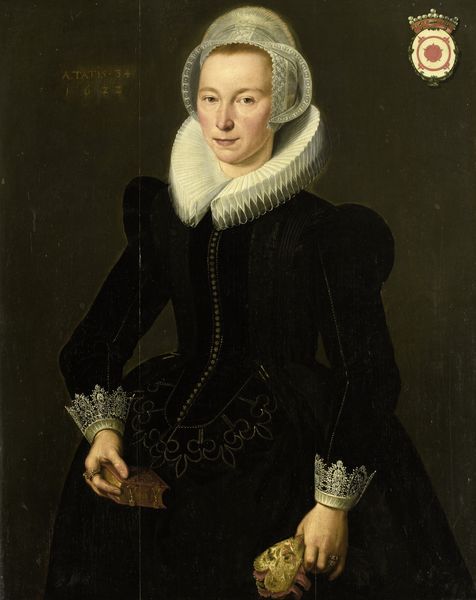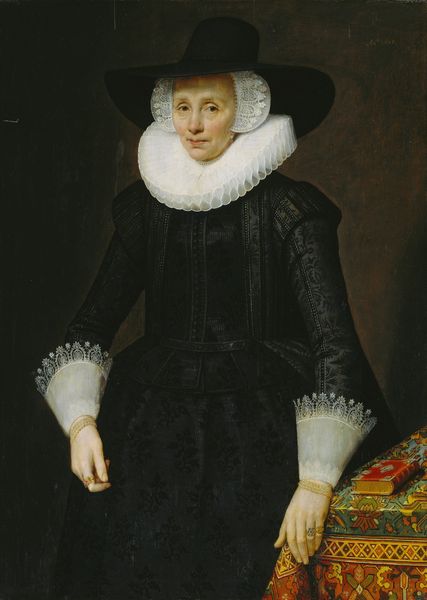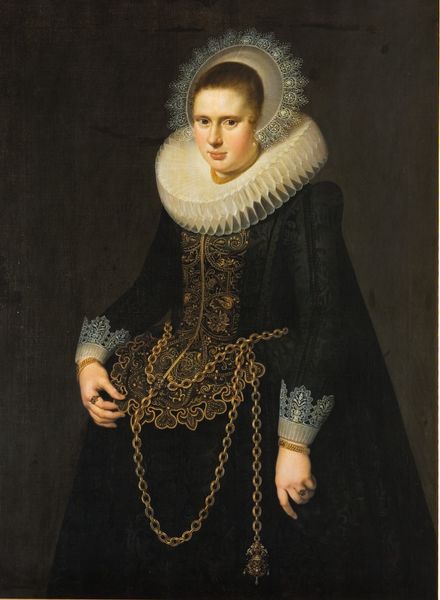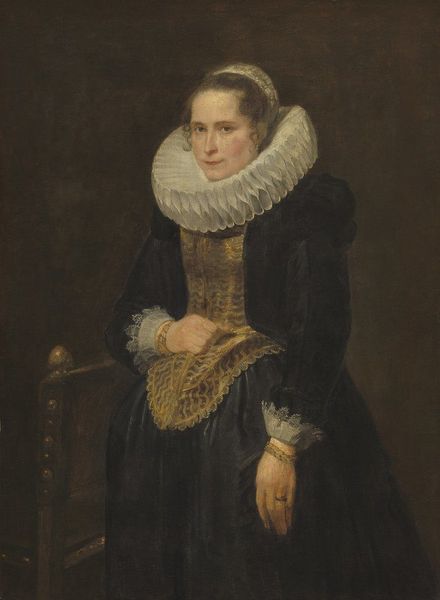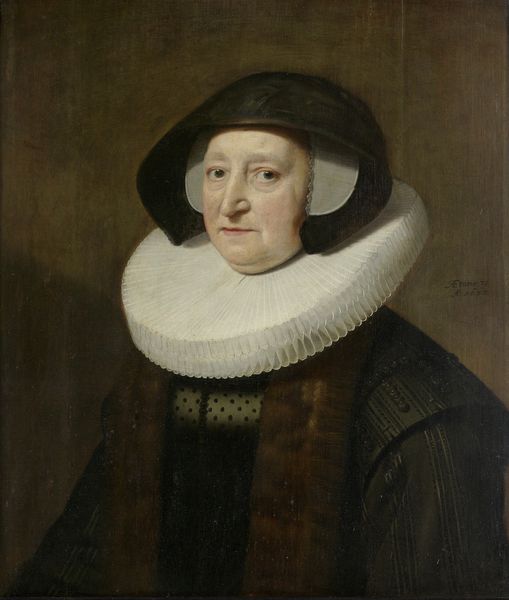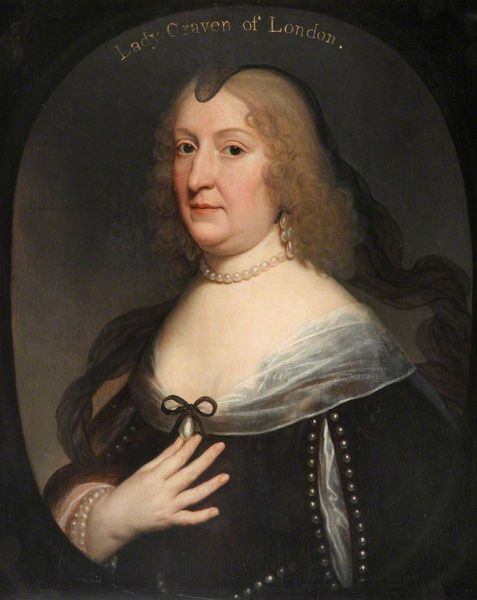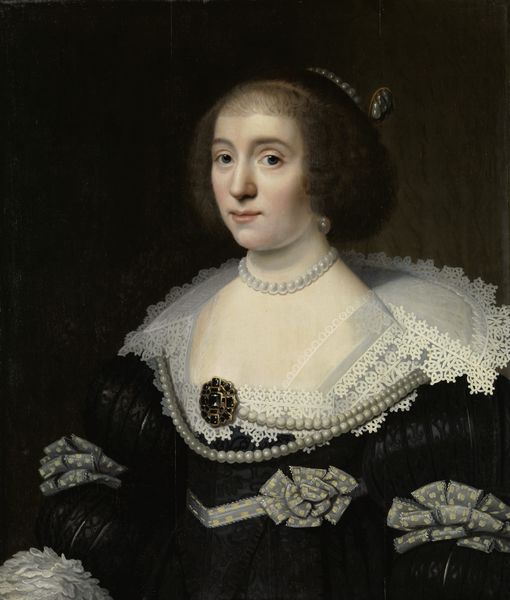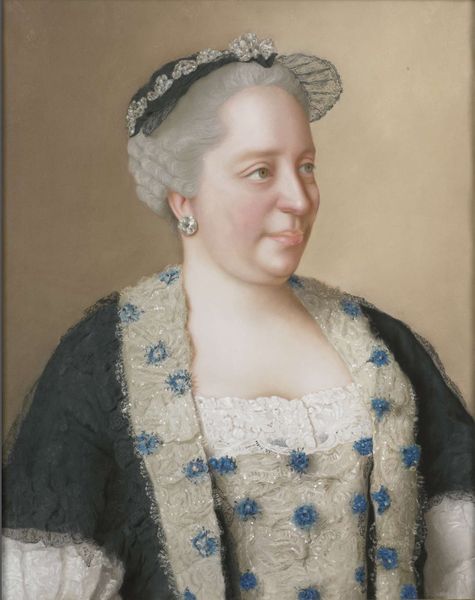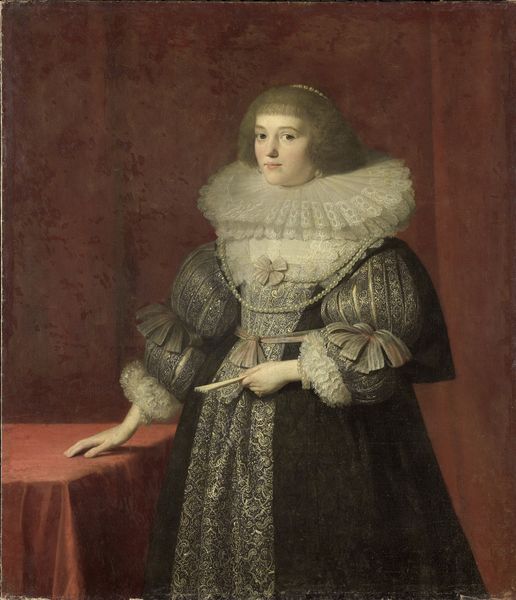
Dimensions: support: 1143 x 846 x 25 mm frame: 1323 x 1025 x 58 mm
Copyright: CC-BY-NC-ND 4.0 DEED, Photo: Tate
Editor: This is Adam de Colone’s "Portrait of Lady Margaret Livingstone, 2nd Countess of Wigtown." It’s undated, but de Colone was active in the early 17th century. The detail in her clothing is amazing, but I’m curious about her expression. What stands out to you? Curator: Her attire signifies status, but it's the small details that resonate. Notice the flower she holds, perhaps a carnation, a symbol of marital love. How does that relate to the heavy jewelry, markers of lineage and wealth? Editor: So, the symbols present two sides: personal affection versus social standing? Curator: Precisely! The portrait becomes a site of negotiation between individual emotion and societal expectation, a tension present in many lives, then and now. Editor: That’s fascinating; I never thought about portraits as holding those kinds of conflicting symbols. Curator: Indeed. Each element tells a story about identity and the pressures shaping it.
Comments
tate 6 months ago
⋮
http://www.tate.org.uk/art/artworks/colone-portrait-of-lady-margaret-livingstone-2nd-countess-of-wigtown-t13440
Join the conversation
Join millions of artists and users on Artera today and experience the ultimate creative platform.
tate 6 months ago
⋮
Adam de Colone was an artist of Netherlandish parentage active in Scotland in the 1620s, painting members of the Scottish nobility and their families. His portraits are characterised by inscriptions giving the date and age of the sitter in a distinctive calligraphy. Such marks can be seen on this painting, indicating that it was made in 1625 and that it depicts the Countess of Wigtown aged 30. The younger daughter of the Earl of Linlithgow, she married John Fleming, 2nd Earl of Wigtown in 1609 and had eight children. The family were based at Cumbernauld Castle, Lanarkshire, seat of the Fleming dynasty. Gallery label, February 2016
